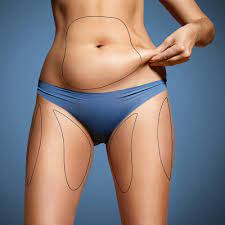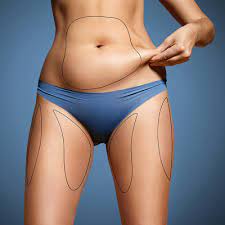If You Can’t Do These Functional Strength Moves, You May Be Aging Faster Than You Think

Functional strength training might just be the secret to feeling confident and capable at every stage of life. It strengthens the muscles we rely on daily—whether that’s climbing stairs, lifting groceries, or getting up from the floor. Simply put, this type of training helps you move through life more easily and with less discomfort.
If you’ve never tried it or aren’t sure what it is, don’t worry. I’ll explain what functional strength training involves, why it matters—especially for midlife women—and share my go-to exercises so you can get started today.
What Is Functional Strength Training?
Let’s break it down: functional strength training focuses on exercises that mirror real-life movements. And as a woman in her 40s, 50s, or beyond, this shift in training style becomes more important than ever. While younger versions of ourselves may have focused on toning for appearance, now it’s more about training to stay mobile, independent, and injury-free.
AdvertisementAdvertisement#«R25ekkr8lb2m7nfblbH1» iframeThe term “functional” might sound technical, but it’s really about returning to the basics. Think: standing up from a chair, reaching overhead, carrying groceries, or walking up a flight of stairs. Functional strength workouts are designed to help you do these tasks with more strength, balance, and ease.
What Does a Functional Strength Workout Look Like?
A typical workout includes movements that activate multiple muscle groups at once, rather than isolating one muscle at a time. You might perform squats, lunges, rows, or push-ups. These exercises train the body in a way that supports better movement, not just better aesthetics.
For example, walking lunges mimic how we move throughout the day. Push-ups build upper body strength for pushing motions. Rows target the pulling muscles in your back. Even balancing on one leg—like during a single-leg deadlift—improves coordination and strengthens your stabilizer muscles.
You can also add mobility or balance challenges to your workouts using tools like a step platform, stability ball, or even just your own bodyweight.
Is Functional Strength Training Really Effective?
Yes, and especially for midlife women! Here’s why:
1. It Trains You for Real Life
Functional training builds strength for the movements you do every day. It’s about being able to bend, lift, carry, and twist without pain. Whether you’re chasing after your grandkids or unloading a trunk full of groceries, functional workouts prepare your body for those motions.
2. It Reduces Injury Risk
By engaging multiple muscles and improving coordination, functional training helps prevent common injuries. As we age, our muscle mass and flexibility naturally decline—so training that focuses on overall movement patterns is one of the best ways to stay injury-free.
3. It Boosts Balance and Mobility
Many functional moves improve your balance and proprioception (your sense of where your body is in space). That’s critical for fall prevention, which becomes increasingly important as we get older.
4. It’s Customizable
Functional workouts are easily modified based on your fitness level. You can start with bodyweight exercises and progress to resistance bands, dumbbells, or more challenging variations as you grow stronger.
Why It Matters More with Age
Functional strength training is more than just a fitness trend—it’s a way to future-proof your body. When you prioritize functional movement, you’re investing in your ability to live independently, stay active, and do the things you love well into your later years.
AdvertisementAdvertisement#«R2nekkr8lb2m7nfblbH1» iframeIt’s not about lifting the heaviest weights—it’s about moving through your life without limitations.
My Favorite Functional Strength Exercises to Try
You don’t need a full hour or fancy equipment. Even 10–15 minutes a few times a week can make a big difference. Here are some beginner-friendly, functional strength moves to start with:
Push-Ups: Strengthen your chest, arms, and core (push motion).
Mid-Back Rows: Train your back and biceps (pull motion).
Walking Lunges: Improve leg strength, balance, and flexibility.
Step-Ups or Box Jumps: Build power and coordination.
Bodyweight Squats: Practice the motion of standing up from a seated position.
Russian Twists: Strengthen core rotation—important for reaching, turning, and balance.
Single-Leg Deadlifts: Improve hip stability and balance.
Not sure where to start with weights? Check out my guide on how to choose the right dumbbells and know when it’s time to level up.
AdvertisementAdvertisement#«R2tekkr8lb2m7nfblbH1» iframeFunctional strength training is one of the smartest ways to support your body as you age. It helps you stay strong, agile, and confident in your movements—so you can continue to live the life you want, on your own terms.
So whether you’re just beginning or have been exercising for years, start sprinkling functional moves into your weekly routine. The payoff? More energy, less pain, and more freedom to move through your days with ease.
Let’s keep moving—strong, steady, and functional.
 Yahoo CreatorChris FreytagCreator of Get Healthy UChris Freytag has been teaching, training, writing books & speaking on the subject of health & fitness for the last 35 years. Chris is a certified GFI, PT & Health Coach focused on midlife women.
Yahoo CreatorChris FreytagCreator of Get Healthy UChris Freytag has been teaching, training, writing books & speaking on the subject of health & fitness for the last 35 years. Chris is a certified GFI, PT & Health Coach focused on midlife women.This article is a timely reminder that functional strength exercises are not just for fitness enthusiasts; they're crucial to maintaining youthful mobility and potentially staving off premature aging. Skipping these moves can lead one down the path of unexpected time acceleration.
This article, providing a glimpse into the importance of functional strength exercises for maintaining youthfulness through avoiding premature aging effects—a must-read to spur you towards incorporating more dynamic moves in your routine.
Whether due to lifestyle or natural circumstances, individuals unable to perform essential functional strength moves may indeed be unwittingly hastening the signs of aging. This article serves as a timely reminder for everyone on their fitness and overall wellness routines.
A comprehensive guide to delaying the natural age process: master these functional strength moves and you'll notice a significant difference in your physical vitality.
This article, 'If You Can't Do These Functional Strength Moves,You May Be Aging Faster Than You Think,' is a compelling reminder that regular incorporation of comprehensive strength training exercises can help us retain our vitality and counteract the effects of aging.
A comprehensive guide exposing the hidden links between functional strength exercises and age-related deterioration, helping readers recognize how neglecting these moves could accelerate their biological clock — a wake up call for everyone striving to fight aging gracefully!
Miss out on these functional strength exercises and you may unknowingly accelerate your body's ageing process, a thorough reminder to maintain physical fitness across all generations.
This article on functional strength moves provides valuable insights into how our inability to perform these exercises might signal accelerated aging, urgently reminding us of the importance for all ages in maintaining active movements and a youthful physiology.
This article provides a compelling reminder that our ability to execute functional strength exercises is directly correlated with slower aging processes, empowering readers who may believe themselves to be capable of staying youthful through these movements.
This article is a timely reminder that engaging in functional strength moves can help延缓衰老时钟,keeping us young at heart and physically active beyond our chronological years, emphasizing the importance of maintaining physical fitness across various age groups.














